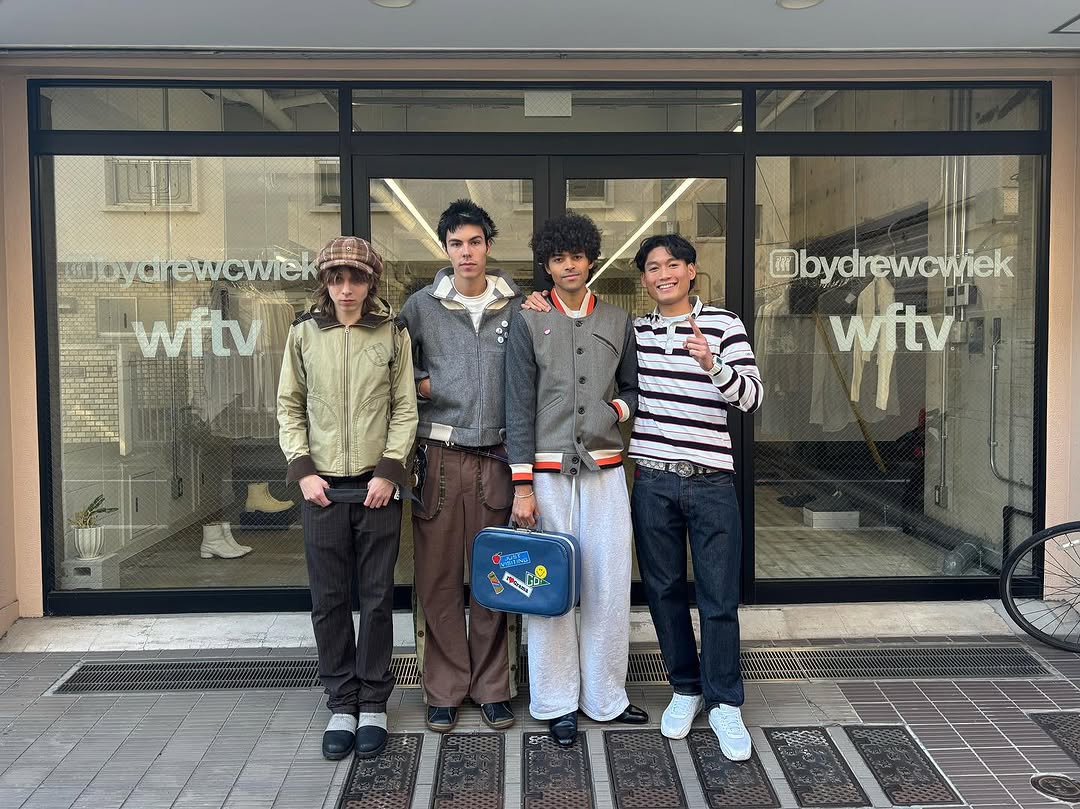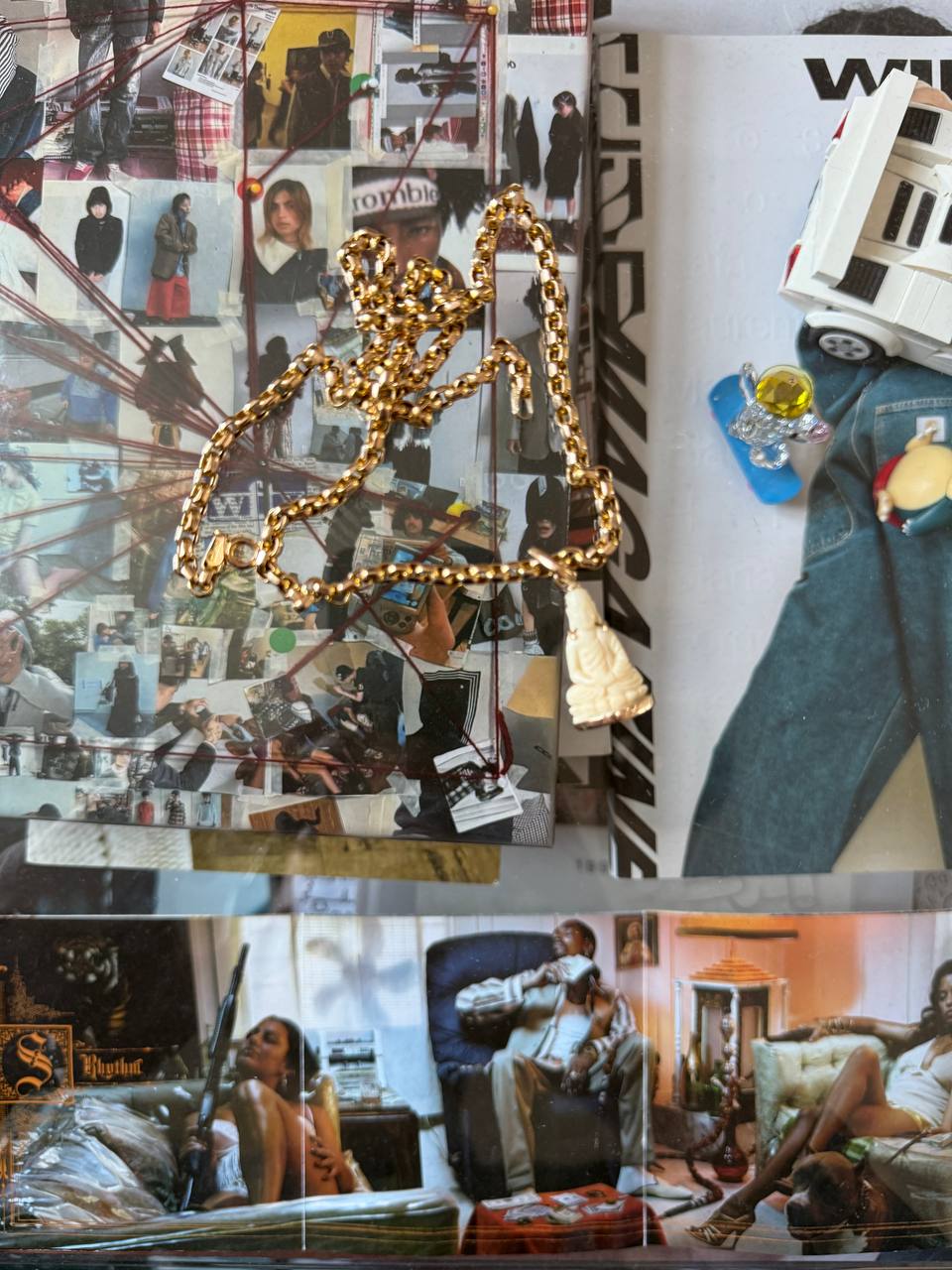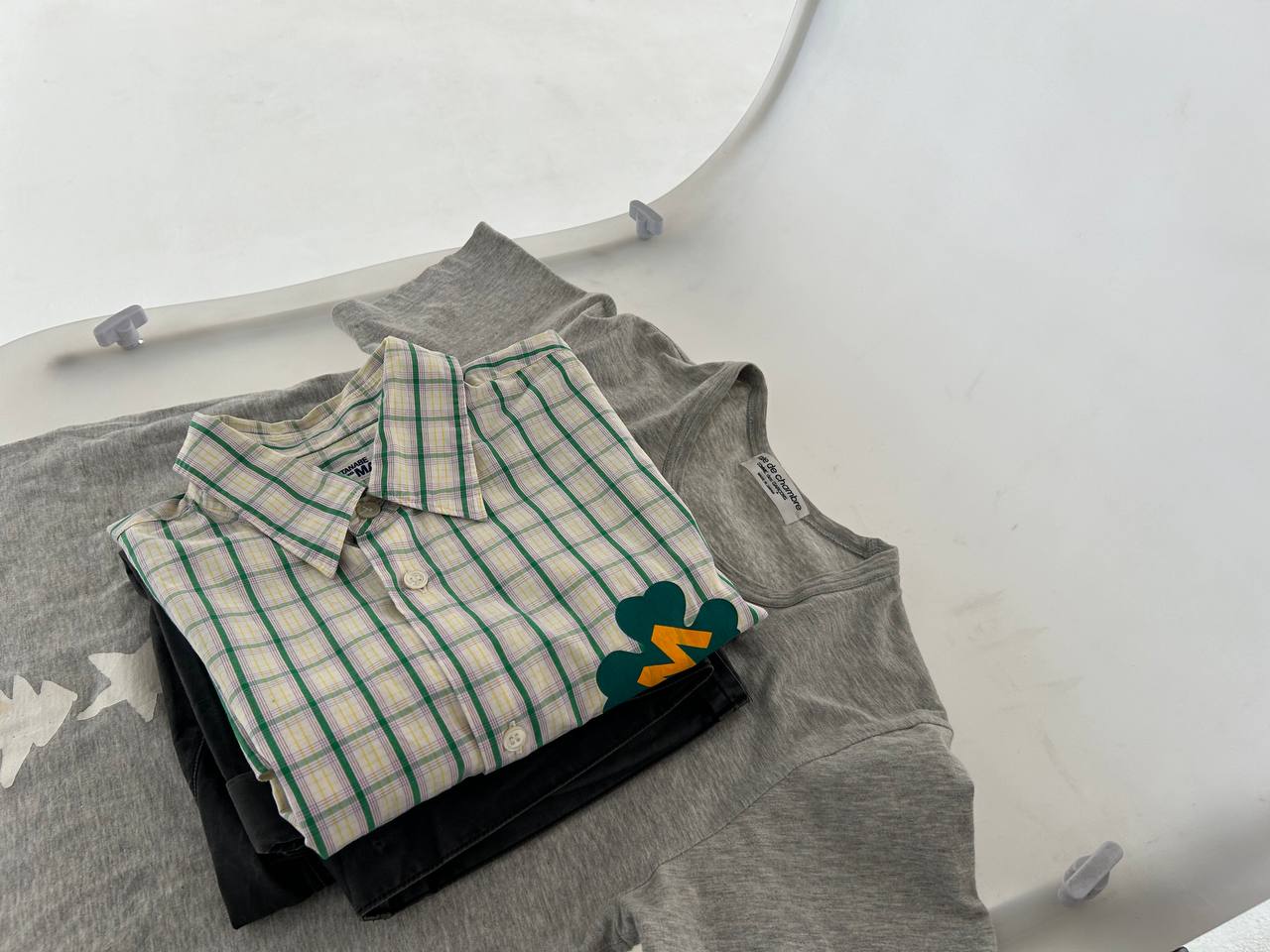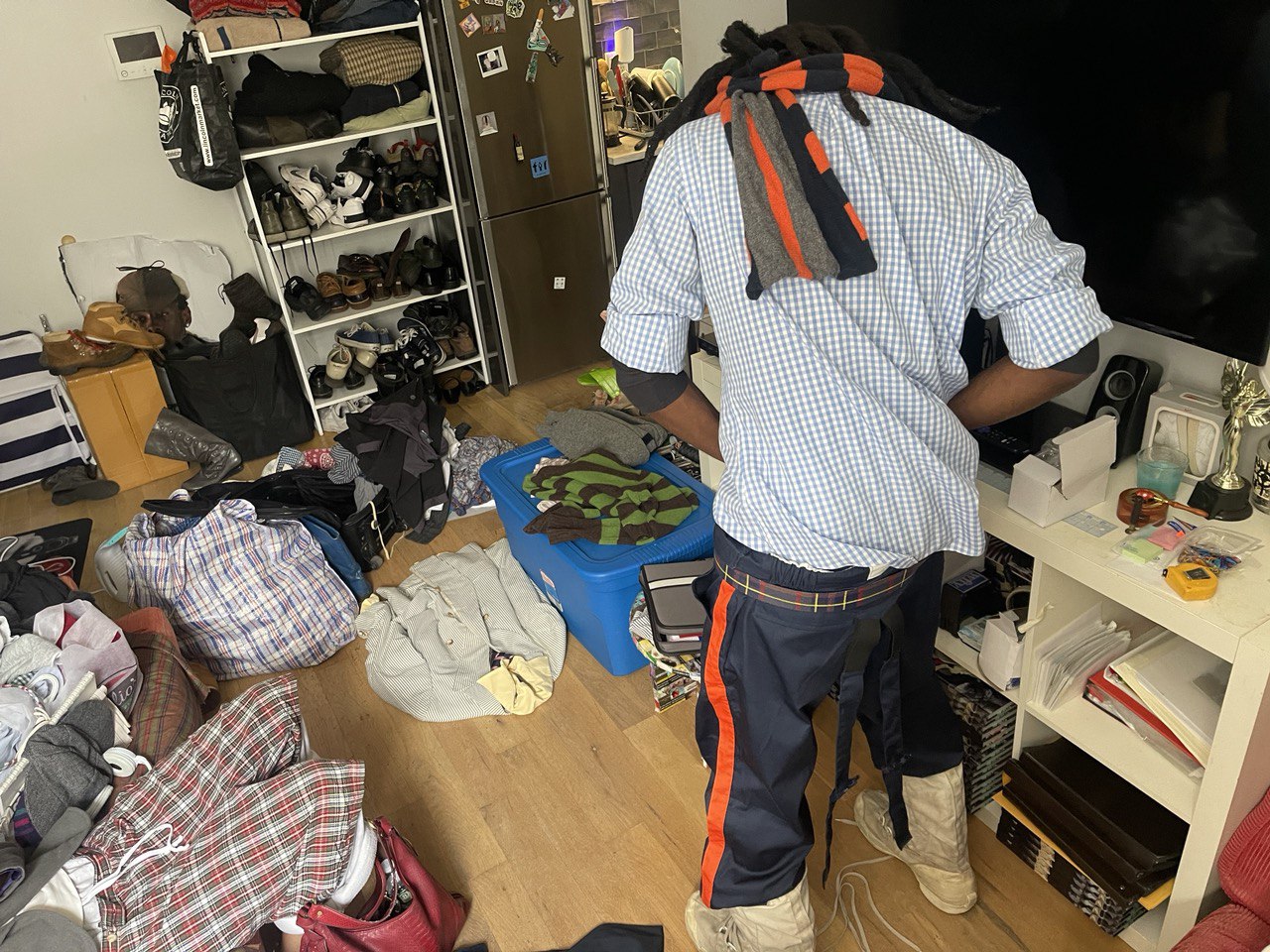
Photography by Drew Cwiek
Author
Holly Connolly
Published
April 10, 2025
A design and production company whose ever-evolving output spans apparel development, merchandising, visual branding, object fabrication and much more, since their inception WFTV have been treating books as a means to showcase and collect their work. First, there was Untitled: Styling Lookbook, a close-look at some of their styling work. Now, in keeping with their quick growth and development, they have brought out Untitled: Curriculum Vitae, an expansive, deeper consideration of what they do.
Consisting of four core members, all in their early twenties, WFTV is a global outfit which draws on the disparate experience and skills of each member. Brought together by the Internet and social media, behind WFTV are: Keenan Grooms and Drew Cwiek, who are both based in New York, U.S.A., Khang Nguyen, who is based in Hamburg, Germany, and Artem Nee, who is based in Saint Petersburg, Russia, as well as numerous collaborators, including Paloma Wool.
“Keenan had the idea to start WFTV, and he kind of picked us,” says Nguyen. “We have so many different interests and areas of knowledge that then also overlap and come together. Especially being in different places, if you have distinct cultural backgrounds or whatever, that impacts the way you think. But we always come to some conclusion.”
Here they discuss their collaborative process, originality and what the future might hold.
A book can be taken more seriously
Why did you want to make a book?
Khang Nguyen: It's different from a magazine, but we also have tried out making magazines before.
Drew Cwiek: A book offers a better, more professional perspective on print media compared to magazines, which I think can get lost pretty easily in their field. I feel like a book can be taken more seriously.
Did you publish the magazines?
Keenan Grooms: No. It's all private, no one's ever going to see them really.
Why not?
KG: They don't need to be shown. It’s like a process of trial and error, you don’t put it out because it’s not done yet.
How do you start to workshop your ideas?
DC: Usually we have design meetings as a team, we go over everything, and then we'll confirm together before submitting anything. So we'll have however many calls are needed before we go through the process of actually producing something. I think it's more of a collective input, versus just deciding that we're going to make something.

WFTV, from left to right - Artem Nee, Drew Cwiek, Keenan Grooms and Khang Nguyen
At the end of the day we're all friends
You all work very collaboratively. What do you think draws each of you to working with other people?
DC: I think that way of working was the founding blocks of how we first started doing what we're doing. When we originally started, the first book was our first project, and that was just a bunch of our friends together taking photos. That structured how we function within our company, because at the end of the day we're all friends, and that’s highlighted in the work that we do.
KN: The friends part is a big, big thing, especially when we look at the first book. I remember showing it to some other people in Germany who were very professional, creating their work with publishers and all of that, and they kept saying, “It looks super easy, what you did.” I kept saying, “Yeah, it should be.” The idea of this project is three pillars – friends, fashion and iPhone – and then we just take pictures to put on in the book.
What I think is impressive is that you can do stuff like this, and then put it out. You don't have to be super professional about stuff. People our age, or younger people, often feel things have to be very professional – “I need to put this much into a studio to get this and that.” We want to stray away from that, we want to do DIY, clothes, and just express what we have.
I really like that sentiment, because I think sometimes people feel that they have to get to a certain level of professionality in their industry before they can start putting work out. Why do you think you feel that you don't have to do that?
DC: It’s a fine line of like between being unprofessional and doing what you want, versus still doing what you want, but remaining professional. It's not like we're doing everything DIY and unprofessionally, but I think that the line we draw is fairly shown in our work.
KG: It's about knowing the rules, the industry standards, before you break them. I don't like doing the normal, popular stuff. I'd rather do stuff however I want to do it, while still respecting others.

Photography by Khang Nguyen
It's a starting point for a new generation
You guys have worked together for a couple of years now. Of everything you've worked on together, what project or endeavour have you learnt the most from?
Artem Nee: I'd say it’s been overall learning from everyone how to put the same amount of input into a project. Since nothing we do is strictly a personal thing, and it's all coming from all four of us, I think that's the thing that I’ve learned the most, from working in the team. Not everything can go just how you imagine, you have to listen to the people around you.
What do you think the future is for WFTV? What do you see it being in two years, or 10 years?
KN: I think we're all on the same page when we say that it's a starting point for a new generation bringing something fresh to the culture. I don't want to give crazy credit to ourselves, but I'd say that it's the first big step for younger people to do something, and I feel like we're the only people doing it. In two, three years, people are going to be like, “Oh, WFTV did it first.” I don’t want to brag or anything, because I don't like doing that, but there are people who do try to copy our style. We’ve noticed it, we’ve seen it, and we just don't say anything about it, because at the end of the day it’s a free world.
KG: I like it when people copy because it means you’re doing something right.

Photography by Artem Nee
There is no idea that's just yours
Do you feel at all protective over your ideas? Is there a line when it comes to copying?
KG: I'm not protective. I'm protective if someone's trying to take an idea from me, but if someone's doing it also, that’s different from taking it. If someone brought out a similar book to ours a year later, I’d say, “Oh, that’s cool. They saw it and they thought it was cool, so they did it, it's inspiration to people.” There is no idea that's just yours. When you make an idea come to life, it means that you're sharing it with others, so it’s not your idea.
AN: There is also a really thin line between getting inspired and copying, because some people just copy with no hesitation and that sucks. But when people are getting inspired and they then do something different, or rethink the original idea, that’s cool.
KN: Imagine you scroll through Instagram, and you see your style on someone else’s post, that feels very different than when you get an email from someone saying, “We took inspiration from you, and thank you so much.”
How did you put the latest book together?
KG: We stayed up late and sent files around on Telegram, and then we were like, “This sucks.” Then, after a while of doing that, it was finished, and we were like, “This looks cool.”
How long did it take you to put it together?
DC: It's usually a year-long process, from compiling all the images or the work from whatever that year was. Then in terms of formatting, it probably took a month, a month and a half.
DC: Or the newest one is a lot more structured compared to the first one. The first one was pretty sporadic, while the new one is split up into chapters. We kind of went into it knowing how it would be set up, we structured it beforehand.

Photography by Keenan Grooms
The book acts as a portfolio
Why did you want it to be different?
DC: To make it more professional and more formatted, so that it's easier to follow as it’s more cohesive.
KN: The book acts as a portfolio, kind of, of what we do or how we do things. So it's important to do it properly.
AN: Also, this time we didn’t have just styling. We had a lot more stuff – lots of BTS, pictures and editorials – so we had to break everything up into sections.
KG: It’s also broader because we’re trying to get more into design as a whole, instead of just styling or photography. I think design is important. If something's made well, it's different than just clothes, it’s more thought. The world is built on design, everything around us is designed. People don't take into account that where you live, the way that buildings around you are designed, the way clothes are designed, how much all of this stuff shapes your mind.

Photography by Drew Cwiek